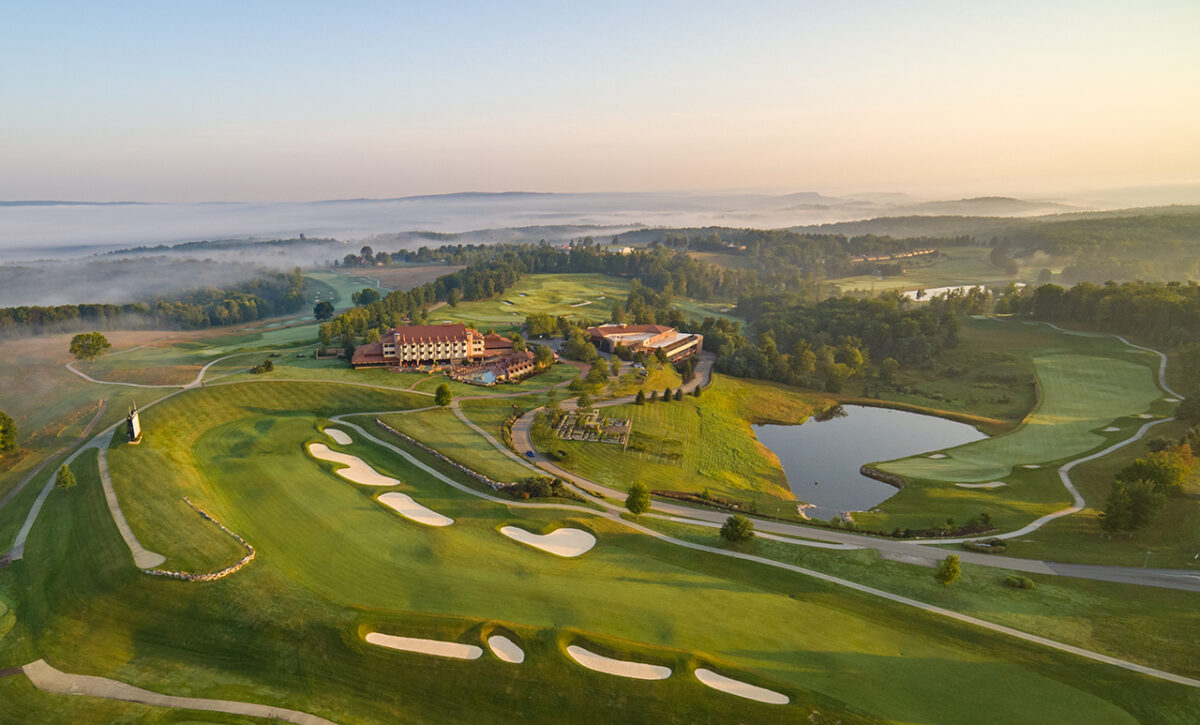This is a special year as elite women golfers have the chance to experience two great courses for major championships in the United States: Baltusrol’s Lower Course for the KPMG Women’s PGA Championship and Pebble Beach Golf Links for the U.S. Women’s Open.
That’s back-to-back majors on two major-worthy layouts over the span of three weeks in June and July, with the Women’s Open slated this week.
It wasn’t always this way. Women’s major championships have a checkered history of course selections.
The U.S. Women’s Open, for example, for decades was played for the most part on a slate of courses that in no way measured up to the layouts on which men’s majors were contested. In most years, with only a sprinkling of exceptions, the greatest women players in the game played less-than-stellar courses – many host sites were solid regional or local tracks, but world-beaters they were not.
Things began to change in the mid-1980s, as the Women’s Open moved with greater frequency to courses ranked among the top 200 in Golfweek’s Best rankings of either classic (built before 1960) or modern (built in or after 1960) layouts. Women’s Open course selection peaked in 1992 at Oakmont Country Club in Pennsylvania, which hosted the event again in 2010.
As measured by average rating, course selection has continued to improve over the past 20 years. Golfweek’s Best utilizes more than 800 raters who evaluate courses according to 10 criteria and then offer an overall rating of 1 to 10. Their votes are averaged to compile various course rankings lists, including the modern and classic lists. In general, any course rated above 6 would be considered by most players to be a nice local or regional course, and in most cases a course rated above 7 would be worth traveling some distance to play. A layout scoring higher than 8 is among the top 60 or so courses in the world, and only seven courses in the world rank above 9 points – Oakmont is among those seven.
The average rating of the host courses for the U.S. Women’s Open has improved in each of the past three decades. For the period of 1993-2002, the average (using the 2022 Golfweek’s Best ratings for data) was 6.924. It improved to 7.100 in 2003-2012, and it climbed a bit more to 7.195 for the 10 Women’s Opens of 2013-2022. Compare that to the average of 6.277 from 1973-1982.
And course selection only continues to improve. Starting this year with Pebble Beach (using the 2023 Golfweek’s Best ratings for data), the lineup of announced sites for the U.S. Women’s Open scores an average rating of 8.36 among Golfweek’s Best raters. That’s in line with men’s championships and a far cry from the days when the Women’s Open might be played on a course that hardly anyone in the next state over had ever heard of.
Each of the sites announced to host future Women’s Opens is ranked inside the top 100 Golfweek’s Best modern or classic courses in the U.S. Three of the sites – Oakmont (No. 6 in the 2023 ranking of classic courses), Merion’s East Course (No. 7) and Pebble Beach Golf Links (No. 10) – rank among the top 10 classic courses in the United States. Another four – Los Angeles Country Club’s North Course (No. 14 in the 2023 rankings), Pinehurst No. 2 (No. 17), Riviera (No. 18) and Oakland Hills’ South Course (tied for No. 22) – rank among the top 25.
It’s been a long wait for course selection for the premium women’s golf event to catch up with that of the men, but things are certainly headed in the right direction.










